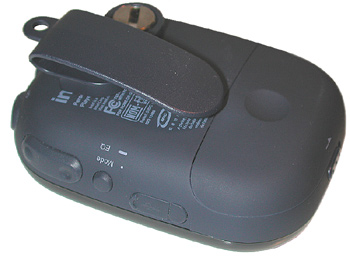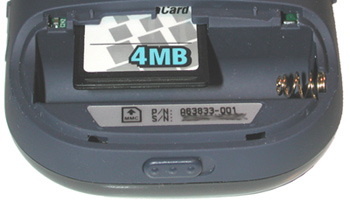
 |

|
| ActiveWin: Reviews | Active Network | New Reviews | Old Reviews | Interviews |Mailing List | Forums |
|
|
|
|
|
DirectX |
|
ActiveMac |
|
Downloads |
|
Forums |
|
Interviews |
|
News |
|
MS Games & Hardware |
|
Reviews |
|
Support Center |
|
Windows 2000 |
|
Windows Me |
|
Windows Server 2003 |
|
Windows Vista |
|
Windows XP |
|
|
|
|
|
|
|
News Centers |
|
Windows/Microsoft |
|
DVD |
|
Apple/Mac |
|
Xbox |
|
News Search |
|
|
|
|
|
|
|
ActiveXBox |
|
Xbox News |
|
Box Shots |
|
Inside The Xbox |
|
Released Titles |
|
Announced Titles |
|
Screenshots/Videos |
|
History Of The Xbox |
|
Links |
|
Forum |
|
FAQ |
|
|
|
|
|
|
|
Windows XP |
|
Introduction |
|
System Requirements |
|
Home Features |
|
Pro Features |
|
Upgrade Checklists |
|
History |
|
FAQ |
|
Links |
|
TopTechTips |
|
|
|
|
|
|
|
FAQ's |
|
Windows Vista |
|
Windows 98/98 SE |
|
Windows 2000 |
|
Windows Me |
|
Windows Server 2002 |
|
Windows "Whistler" XP |
|
Windows CE |
|
Internet Explorer 6 |
|
Internet Explorer 5 |
|
Xbox |
|
Xbox 360 |
|
DirectX |
|
DVD's |
|
|
|
|
|
|
|
TopTechTips |
|
Registry Tips |
|
Windows 95/98 |
|
Windows 2000 |
|
Internet Explorer 5 |
|
Program Tips |
|
Easter Eggs |
|
Hardware |
|
DVD |
|
|
|
|
|
|
|
ActiveDVD |
|
DVD News |
|
DVD Forum |
|
Glossary |
|
Tips |
|
Articles |
|
Reviews |
|
News Archive |
|
Links |
|
Drivers |
|
|
|
|
|
|
|
Latest Reviews |
|
Xbox/Games |
|
Fallout 3 |
|
|
|
Applications |
|
Windows Server 2008 R2 |
|
Windows 7 |
|
|
|
Hardware |
|
iPod Touch 32GB |
|
|
|
|
|
|
|
Latest Interviews |
|
Steve Ballmer |
|
Jim Allchin |
|
|
|
|
|
|
|
Site News/Info |
|
About This Site |
|
Affiliates |
|
Contact Us |
|
Default Home Page |
|
Link To Us |
|
Links |
|
News Archive |
|
Site Search |
|
Awards |
|
|
|
|
|
|
|
Credits |


|
Product: Personal Audio Player 3000 Company: Intel Website: http://www.intel.com Estimated Street Price: $149.99 Review By: Julien Jay |
Design
|
Table Of Contents |
The Intel Personal Audio Player 3000 is a real compact digital audio player that will easily fit in every kind of pocket even if itís a bit thick. When holding the player in the palm of your hand youíll feel its robustness: itís clearly dense and solid. The front panel sports a black border with white indications indicating the use of the buttons (play, pause, etc.). It harbors a LCD screen which looks like a porthole. The playerís front panel is removable so you can slide in it a customized faceplate design to adapt the player to your mood (itís provided with six different facades). The back side of the player is made in a blue rubber which reinforces the though impression. You can screw to the back side of the player a clip to fix the player to your belt. This screw mechanism is nice because it ensures the player will firmly stick to your belt even when you run, move, jump, etc. Nonetheless if you attach the player to your belt while being half naked, the metal screw may hurt you. The bottom part of the back side unveils a battery trap. The Intel Personal Audio Player 3000 uses only one AA 1.5 volt battery: this choice clearly reduces the autonomyís longevity. Removing the battery trap will let you access the embedded Multimedia Card drive. Indeed Intel has made its latest player upgradeable to a virtually unlimited memory size thanks to the external MMC expansion slot theyíve added. That way, you can expand the native 64 MB memory to store more music using MMC cards. However one major drawback is that you have to remove the currently installed battery to add or remove a MMC card: this is definitely not convenient.

Intel Personal
Audio Player 3000 Rear View (click to enlarge)

MMC Extension
Slot (click to enlarge)
The left side of the player hosts three buttons: one to lock the player, and the usual previous and next buttons used to change tracks or perform fast rewind or forward operations. The top side of the player features two separate On/Off buttons as well as, in the middle, an audio jack to connect your headphones (or every other output audio source). The right side of the player offers a +/- button (used to set the volume and navigate in the menu), a menu button and the USB connector to link the player to your PC. The USB connector is protected by a small rub trap. Finally youíll find on the bottom side of the player a button to remove the face and drop in your own made inserts to reflect your own style.

Dismantled
Intel Personal Audio Player 3000 to add custom inserts (click to enlarge)
Playing Music
Now that we have seen the look of the Intel Personal Audio Player 3000, letís see how it works. Before you can carry the player everywhere, you have to pack it with music. Youíll have to download MP3 or WMA files from your computer to the 64 MB flash memory of the Intel Personal Audio Player 3000. To do so itís required to install the brand new Intel Audio Manager 2.0 software. For those of you who canít wait before going back home to download music on the player, Intel has pre-recorded instructions along with sample music tracks in the memory of the player (you can later remove it).
Installation
The Intel Personal Audio Player 3000 comes with a special USB cable thatíll be used to link your computer to the player. The USB connection makes sure the player is compatible with virtually almost every PC on earth while offering an acceptable transfer speed. Once youíve plugged the cable from the computer to the Personal Audio Player 3000, the device will be automatically switched on. Then, Windows will detect new hardware and prompt you to install the driver stored on the Intel Audio Manager 2.0 CD. Installing the driver is a breeze. Once itís done, the last step is to launch the setup of Intelís Audio Manager 2.0 software.



